We’re now well and truly on our way home, having left Sapphire, passing through for an overnighter at a WikiCamps freecamp in Roma, before hitting Lightning Ridge for a couple of nights.
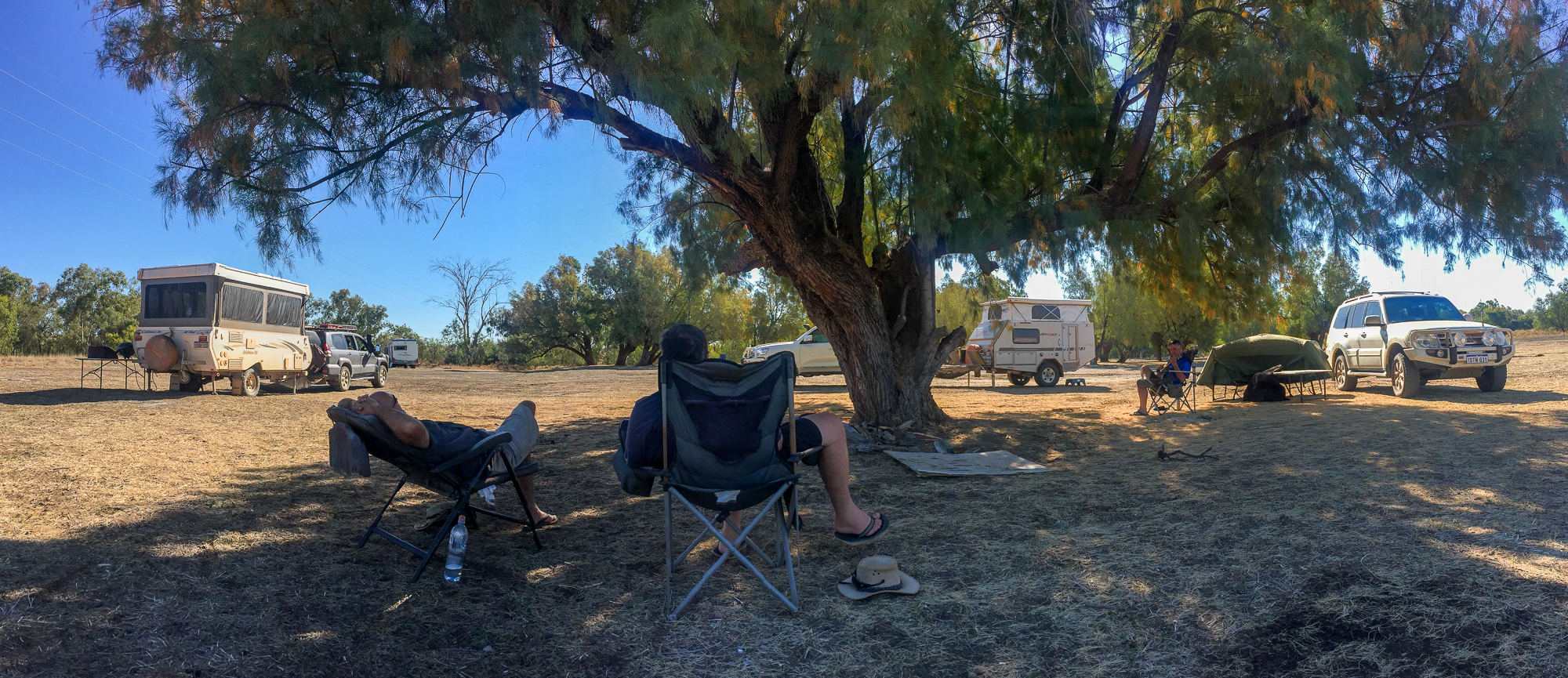
<< Photo credit: Jules – Our freecamp just outside of Roma >>
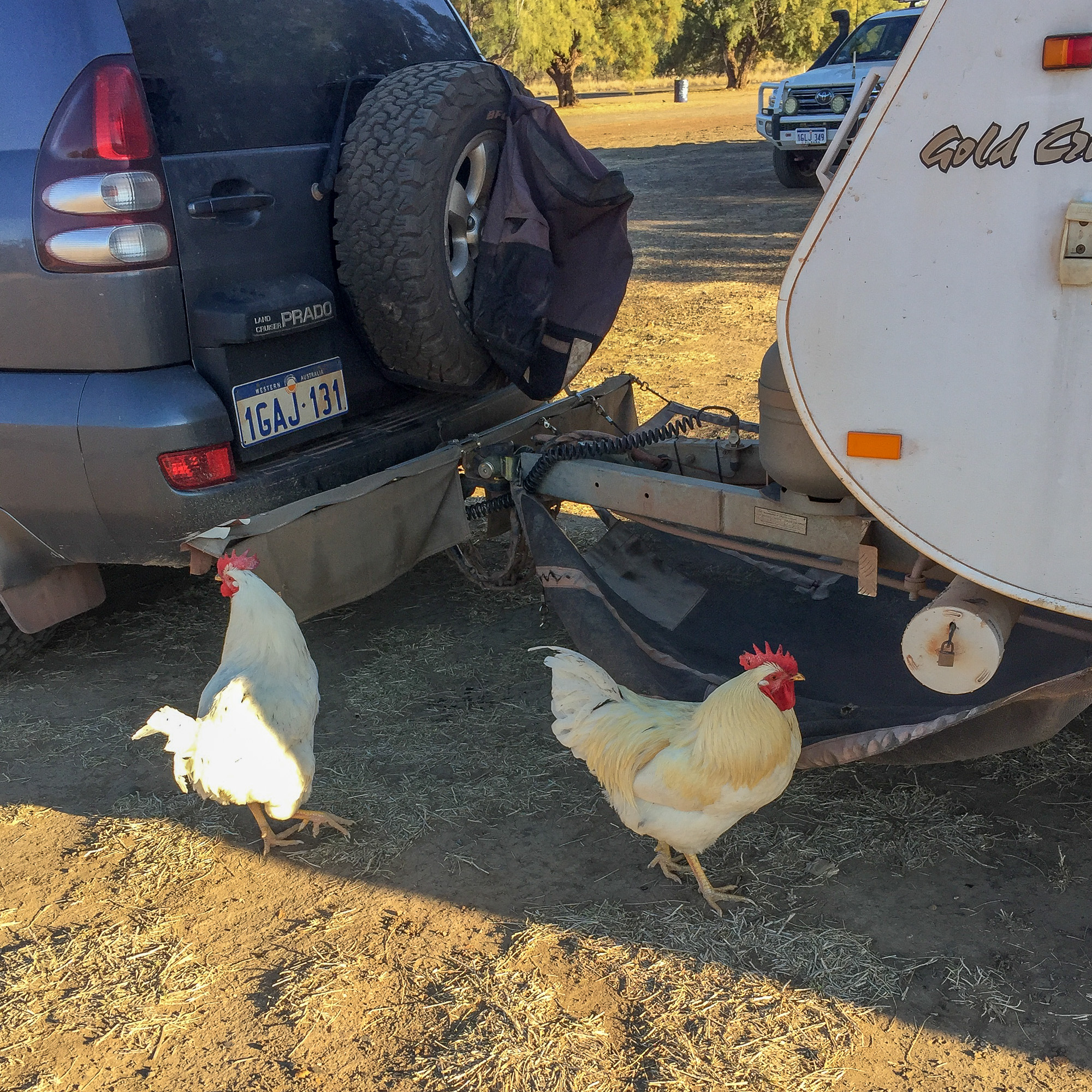
<< Photo credit: Jules – Two free, now wild, Roosters that live at the freecamp just outside of Roma >>
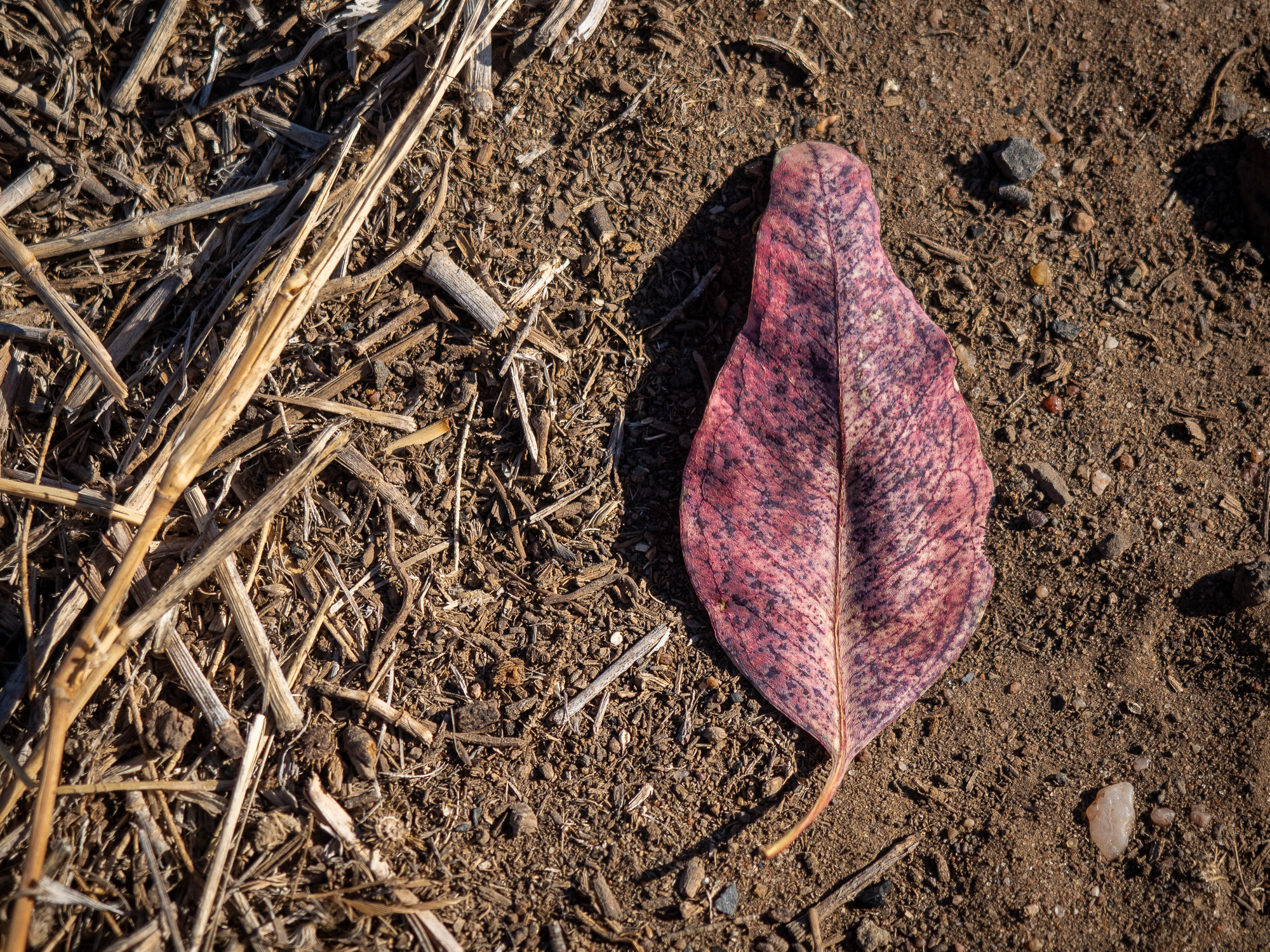
<< Photo credit: Tony – Another wanky leaf photo from Tony >>
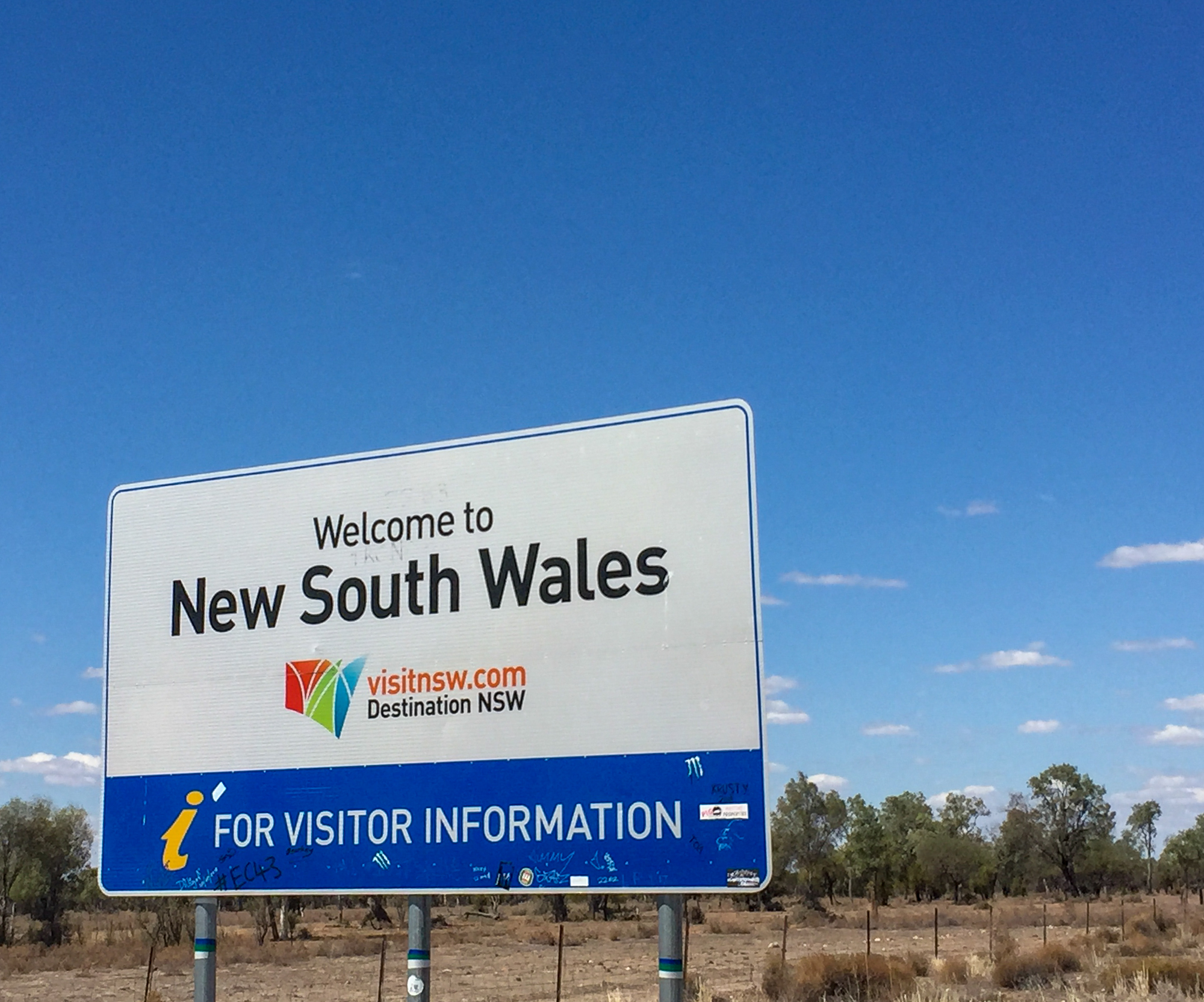
<< Photo credit: Jules – Leaving Qld and now entering NSW >>
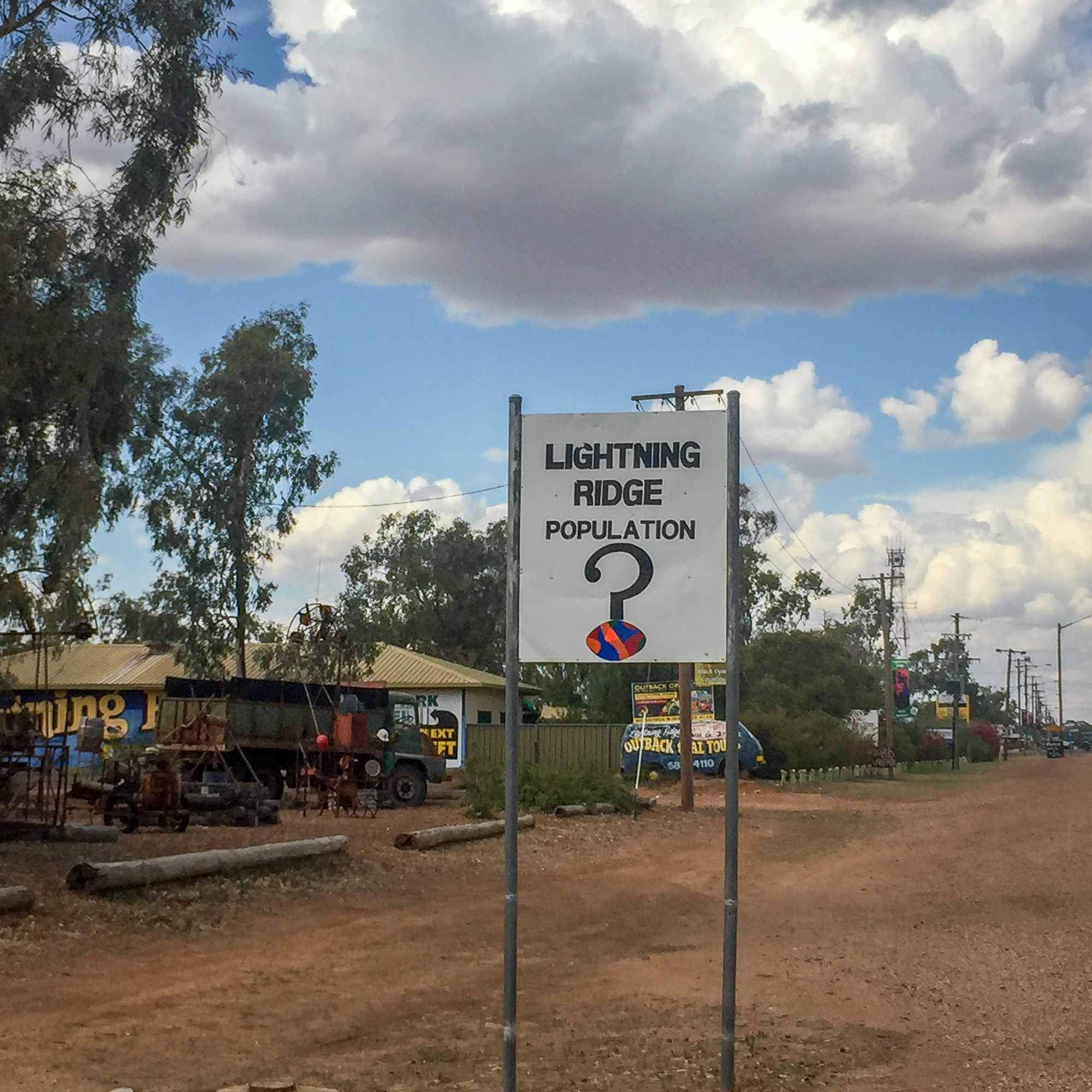
<< Photo credit: Jules – Population of Lightning Ridge ???. This is actually ridgy didge. The 2001 census recorded a population of 1800’odd, however, it’s well known that the town/area supports many more people than that, with estimates as high as 7000 being accepted >>
For those that don’t know, Lightning Ridge is famous for its Black Opal mining and during our travels we’ve been fortunate to visit a few Opal mining towns, including Coober Pedy in S.A. However, Lightning Ridge wasn’t what we were expecting it to be. Driving towards and into town, it looks like many outback Australian towns, surrounded by woodlands etc. Whereas Coober Pedy sits in the middle of a gibber plain, which is basically plains of nothing but small orange and white pebbles, and as you approach town, the mining shafts and mullock heaps (mine tailings) begin, until you can barely see any free land from all the mining.
We learnt later that most of the Lightning Ridge mining has now dried up and the Opals come from the Grawin Opal Fields, about 60km South West of the town.
After setting up the van, Jules and I did a short walk through town, checking out some of the Opal shops. There’s obviously a science to Opals as two stones, or pieces of jewelry, can look fairly similar only to be hundreds, if not thousands of dollars different in price. Jules bought a nice pair of very reasonably priced Opal Earrings, so she was happy. Like most mining towns, Lightning Ridge is a bit quirky and we came across a John Murray Art Gallery just around the corner from our Caravan Park which had some great pieces in it. Way too expensive to buy original paintings but the prints etc. where priced ok.
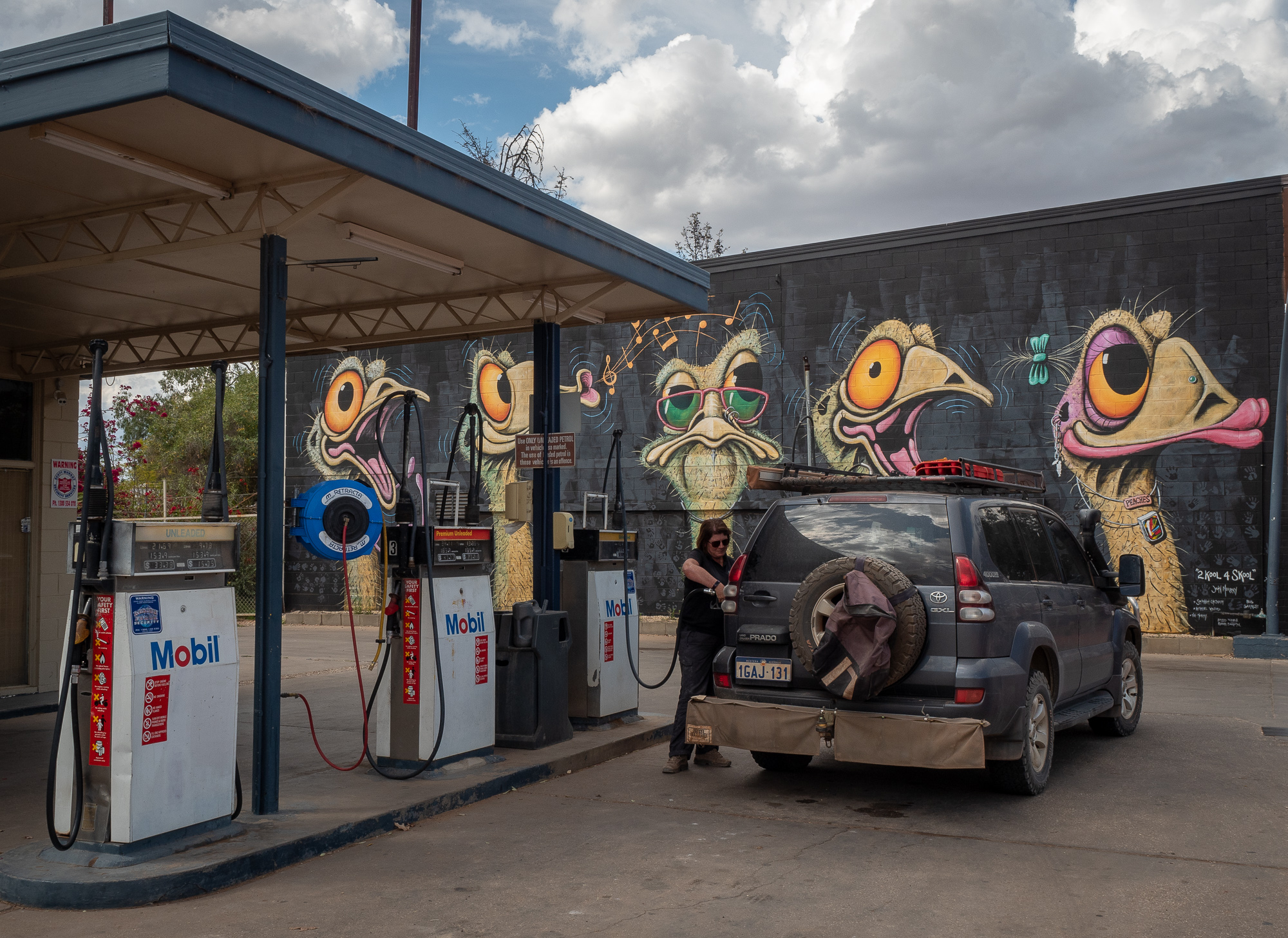
<< Photo credit: Tony – A John Murray mural at the local servo >>
Today, Tuesday 25th Sept., we’re off to the Grawin Opal Fields to try our hand at a bit of noodling, which is basically raking through the old mining mullock heaps for specks of Opal the miners have missed, or more likely discarded as it isn’t worth anything. Entering the Grawin area is much more like the Coober Pedy we’d been expecting to see. There’s tracks running off everywhere, none of them officially signposted, however, the main tracks are marked with different coloured car doors hanging off trees. Small, person sized only, shafts descend into the ground all over the place, some within centimetres of the tracks. Most are covered, or at least lightly fenced to show that they’re active mines, but many are not. Regardless, Ratters, that is people who fossick illegally on other peoples claims, are very clearly warned with a variety of signs that they’re not welcome and will be dealt with using bush law. There’s no policeman out here.. So to noodle, you have to climb up the two large mullock piles in the centre of the field, as this is the only spot where all the miners are allowed to dump their tailings. We got lucky, a truck turned up with a load of fresh tailings just after we arrived and after a quick chat with the driver, he mentioned that we might find some Opal chips in his mullock as they’ve been drilling and finding some ‘colour’ recently.
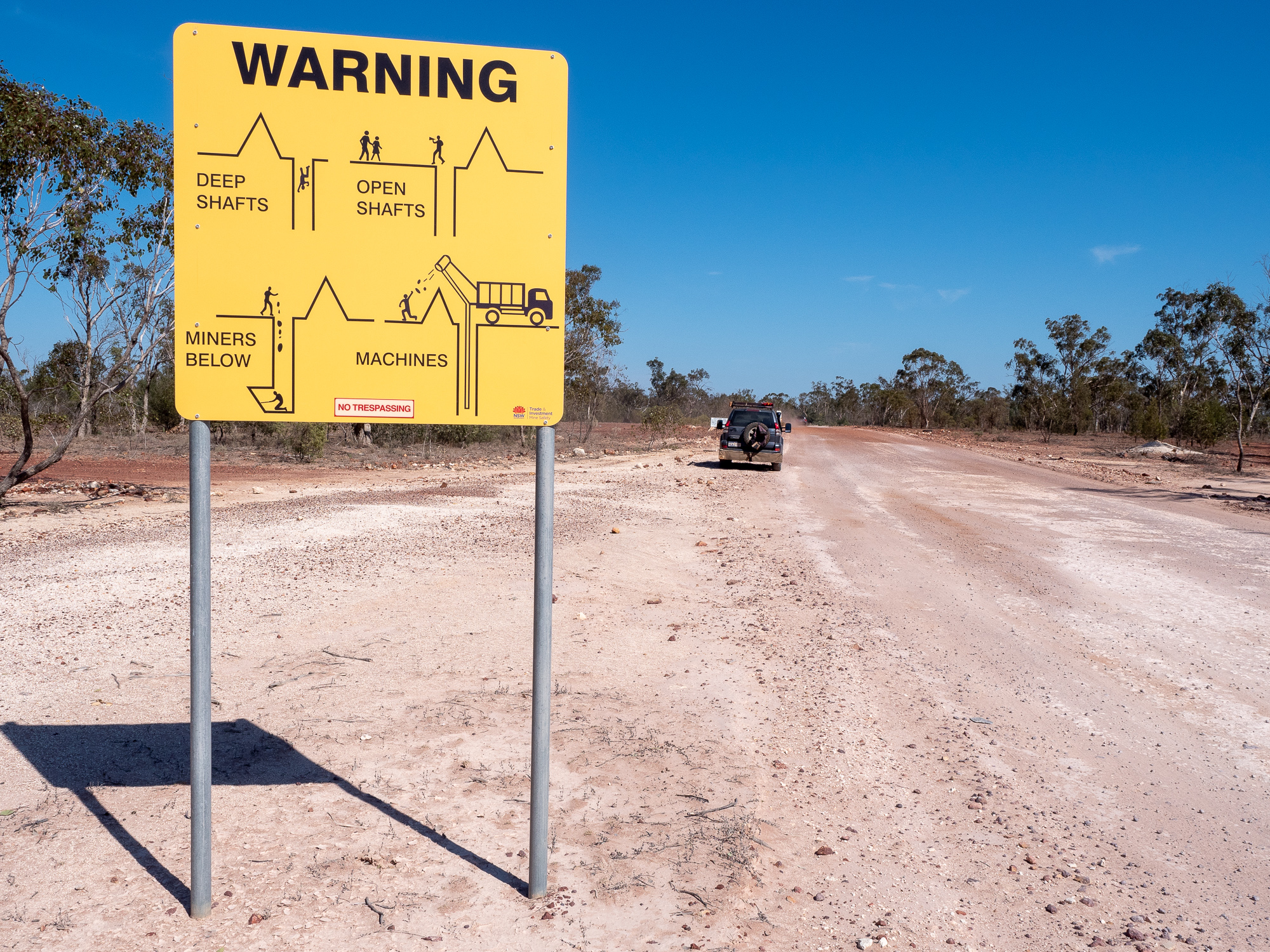
<< Photo credit: Tony – Basic mining safety message as you enter the Grawin Opal Fields >>
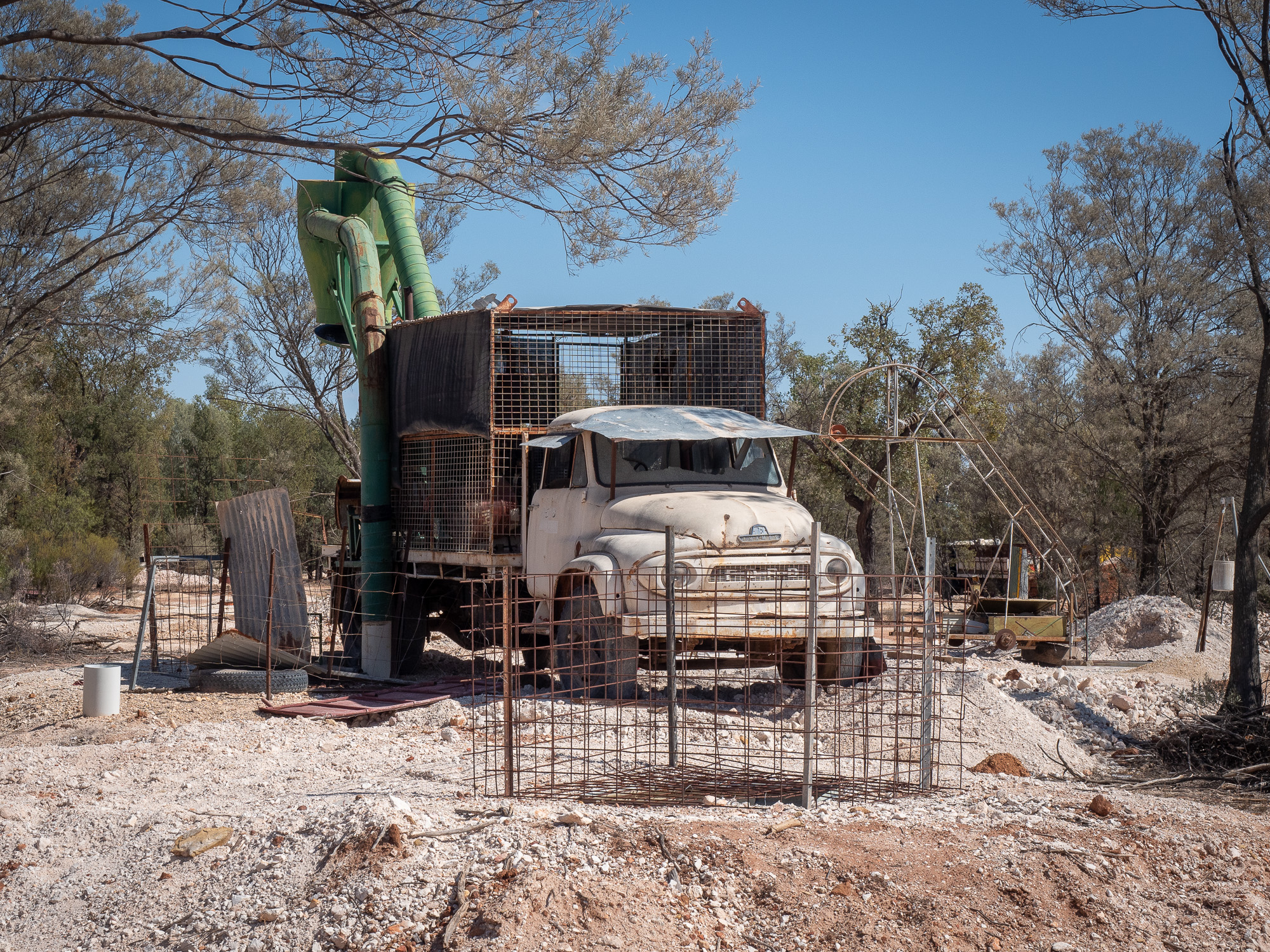
<< Photo credit: Tony – A mine setup. You can see a couple of shafts in this pic, with the truck setup with what I think is a big vacuum thing, to suck up all the rock so it can be sorted >>
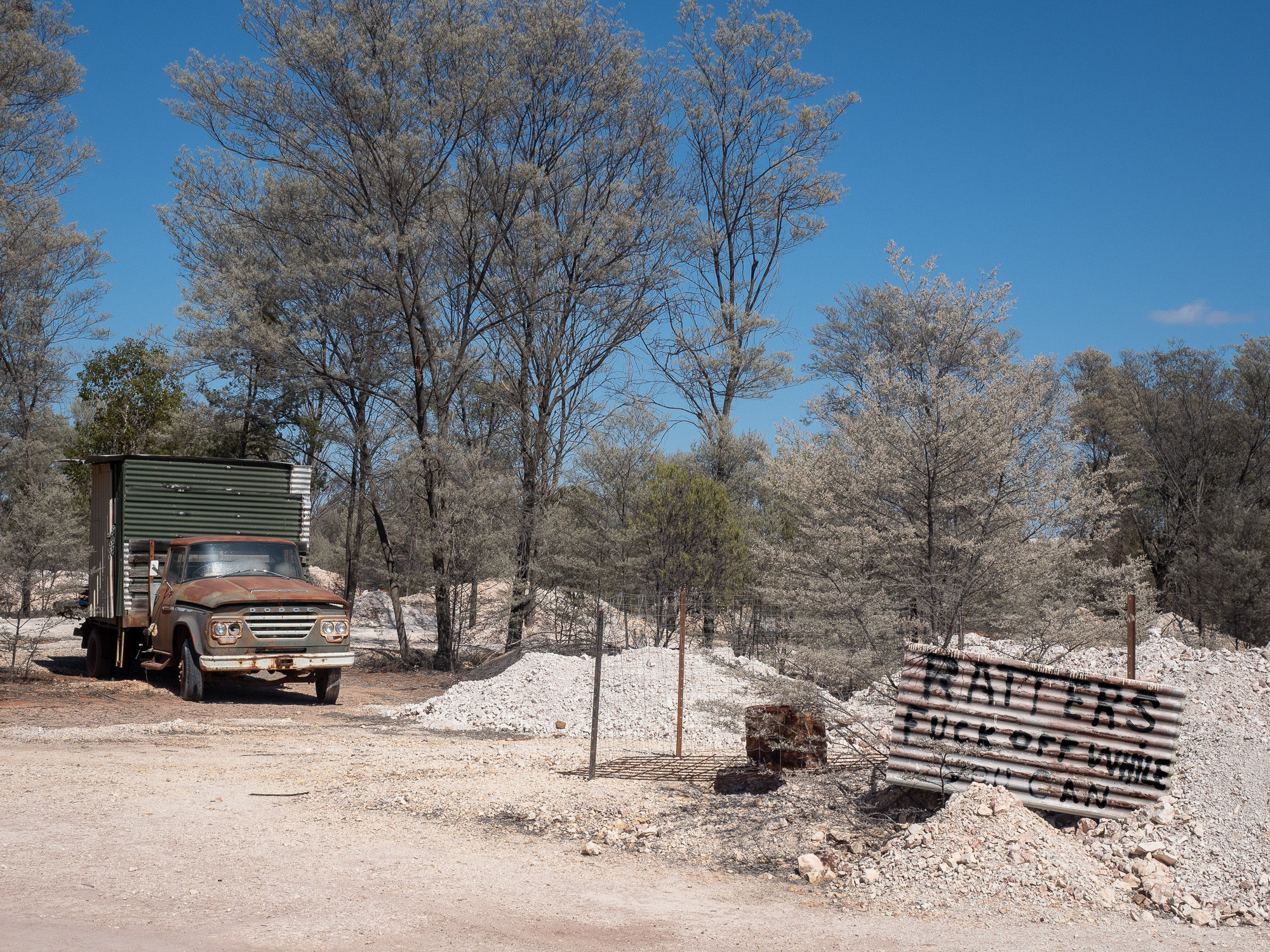
<< Photo credit: Tony – A very clear sign about what happens to Ratters, who are people that fossick illegally on other peoples mining claims >>
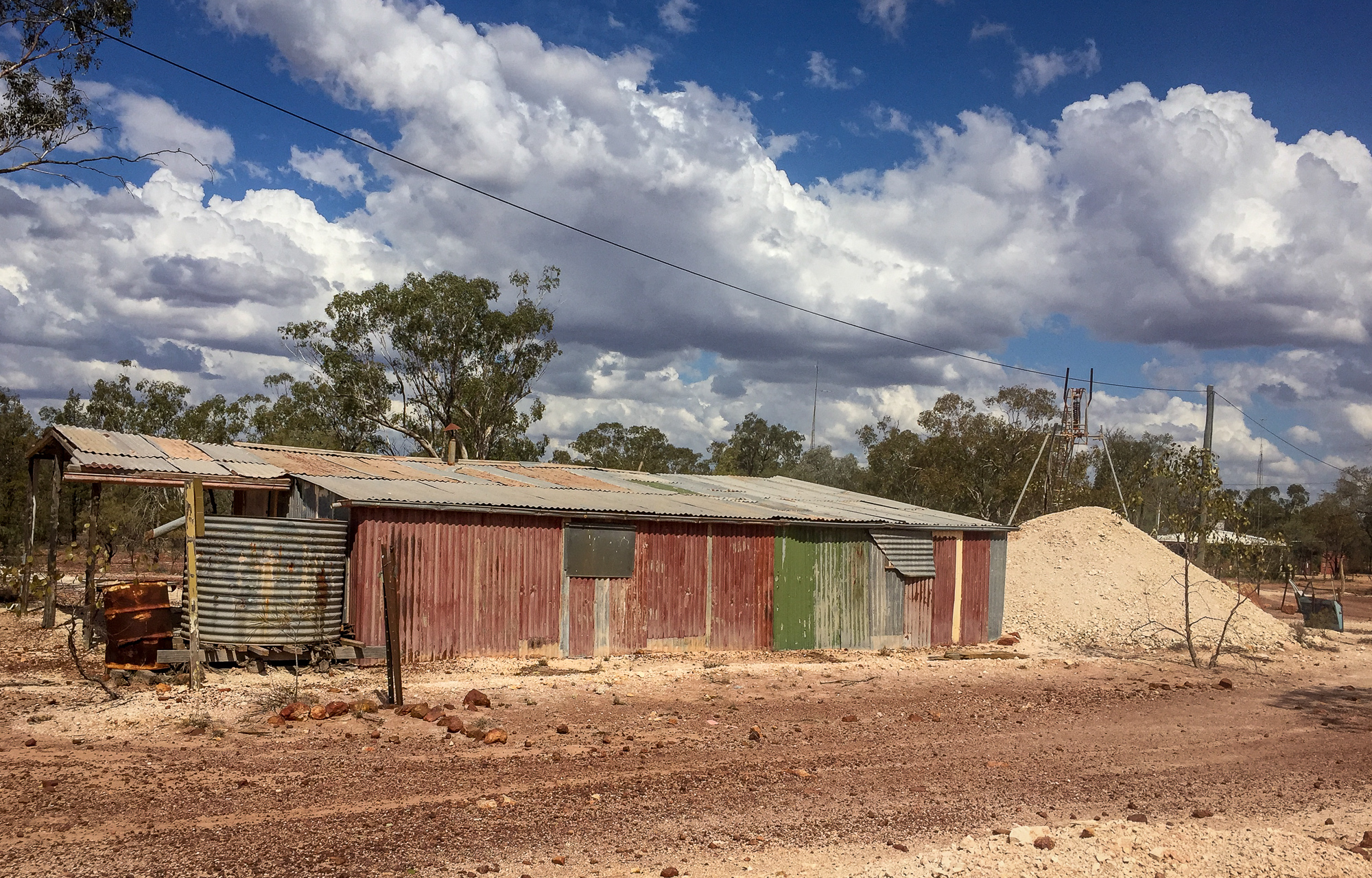
<< Photo credit: Jules – A miners hut/house in Grawin >>
Opal itself is the result of millions of years of Silica, concentrated in areas of old inland seas, making its way into spaces underground, where it forms the unique and colourful Opal we see in the shops. This means though that finding Opal can be somewhat hit’n’miss and although some knowledge of geography is good, most of the time is drill or dig everywhere and hope you find a seam of it. Finding ‘colour’ is when the miners hit a patch of Opal which is worth following and digging up.
Up until chatting to the truckie, we’d only been finding some potch which is Common Opal but it doesn’t contain any of the sparkle or colour that Opal is known for. Potch is a good indicator for Opal. However, based on the truckies word, we migrated, with a couple of other noodlers, to the new pile and over the hour or so we noodled, both Rod and I managed to find about 4 pieces of ‘colour’ each. Certainly nothing to retire on, but at least we found something as I’d read some people spend days noodling here, only to find nothing at all..
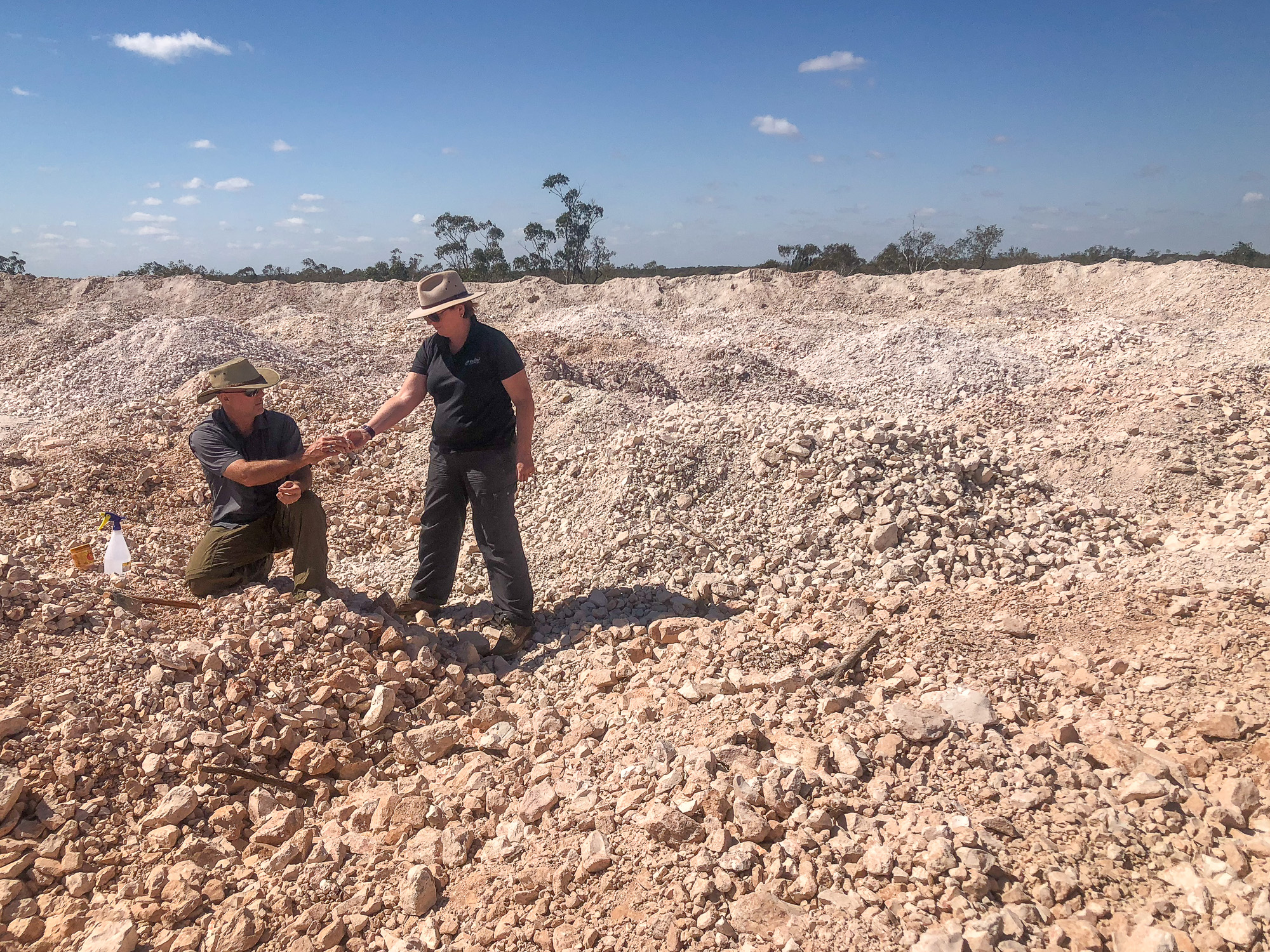
<< Photo credit: Jeff – Jules and me noodling the Grawin mullock dumps. It’s a very big dump area and we’re looking for very small, smaller than a 5 cent piece, bits of Opal >>
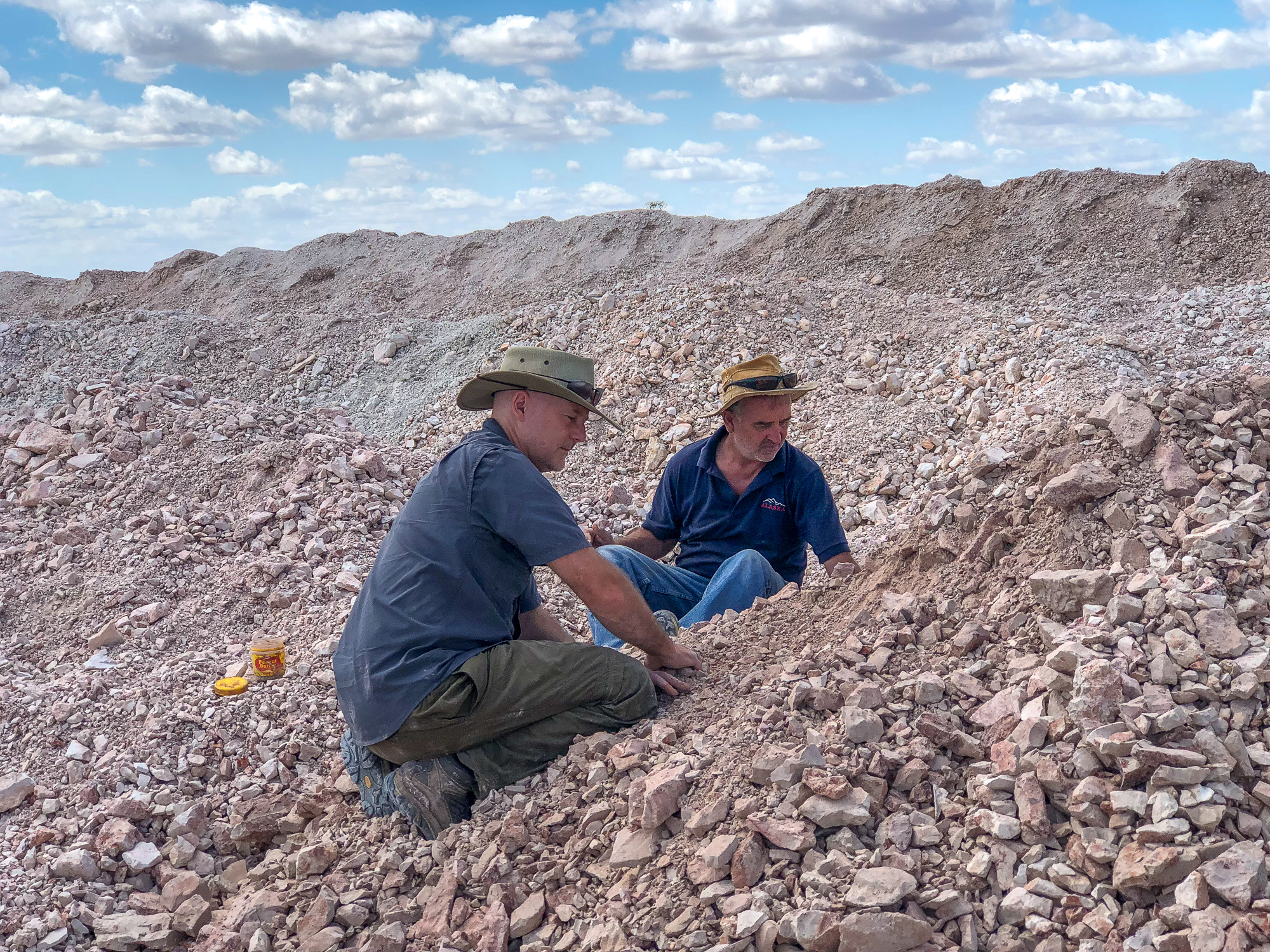
<< Photo credit: Jeff – Rod and me noodling the truckies new mullock dump. This is where we found our couple of pieces >>
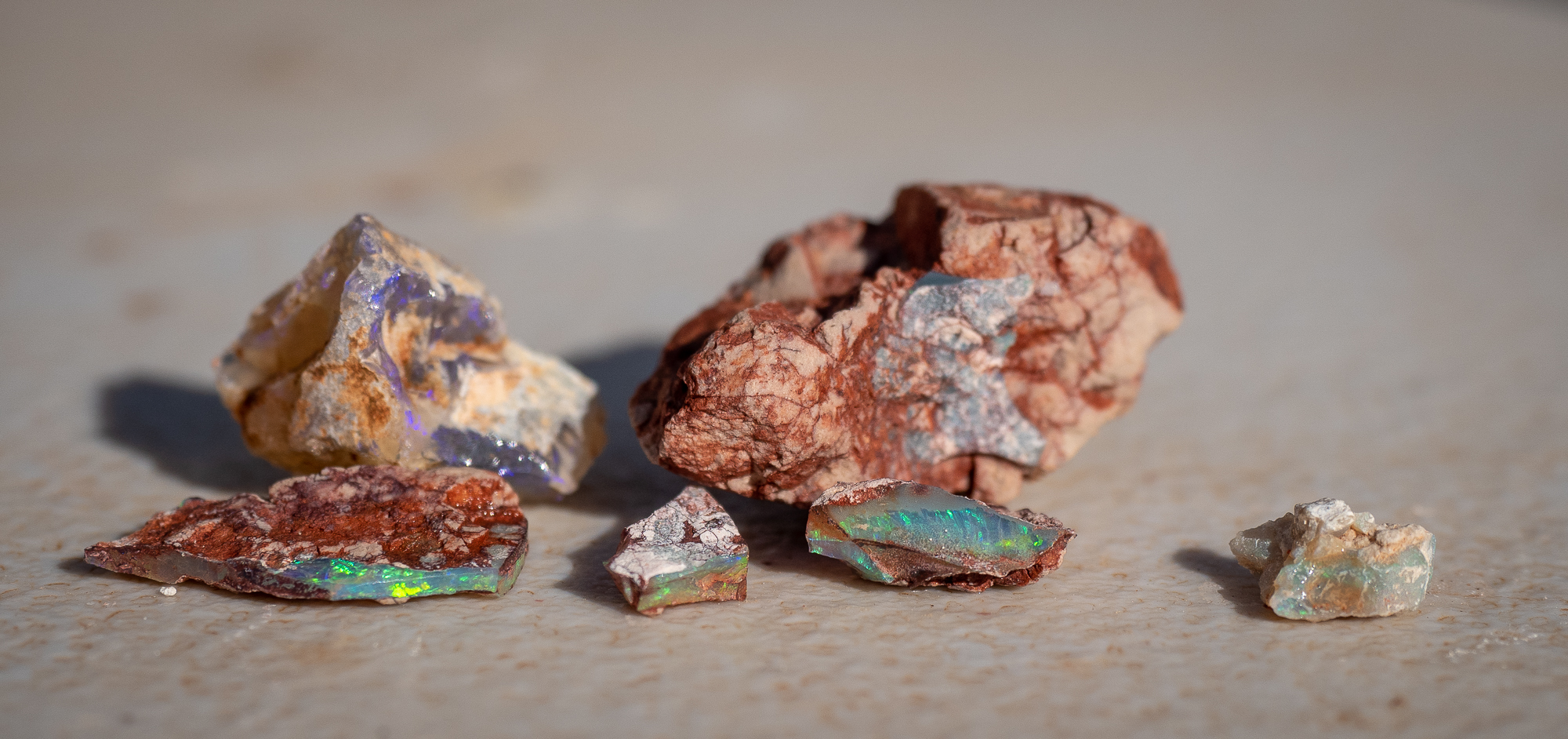
<< Photo credit: Tony – My findings for the couple of hours spent noodling. Rod found a similar amount >>
We were a bit parched following our noodling session, so we headed off to the Club in the Scrub, which is a volunteer run historic pub in the middle of the Opal Fields. A great and fascinating place to have a beer and some lunch.
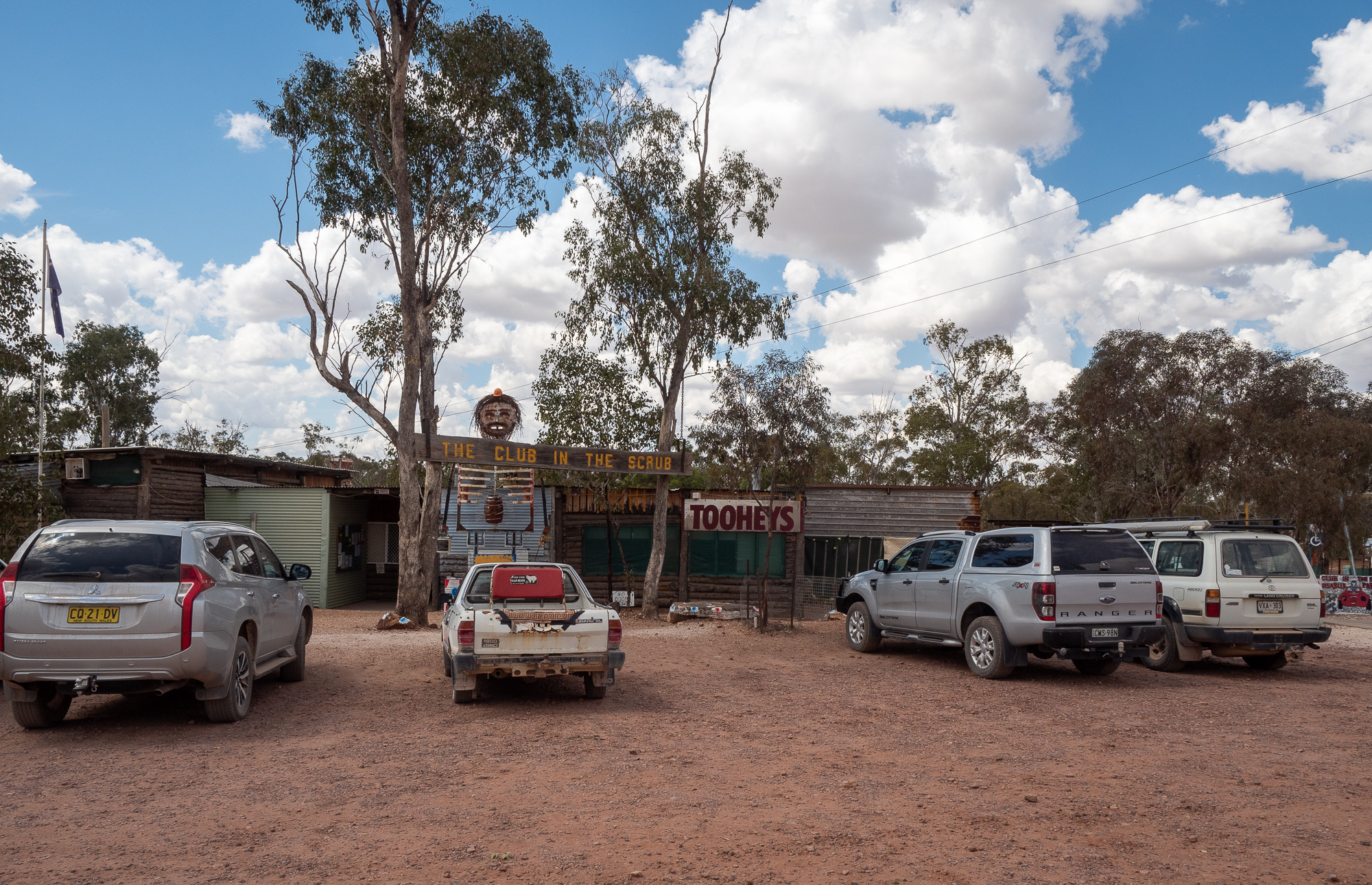
<< Photo credit: Tony – The historic and very character Club in the Scrub >>
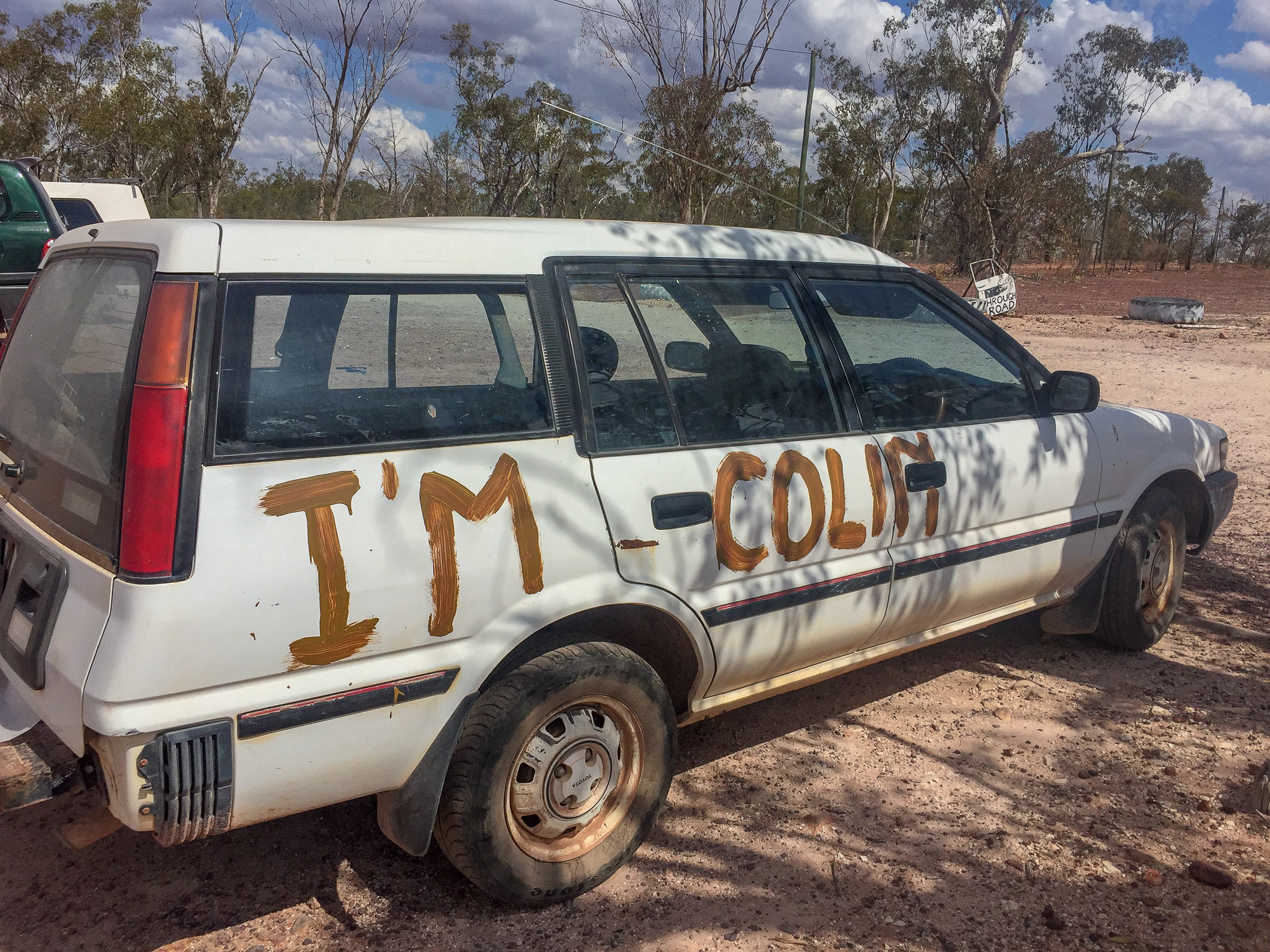
<< Photo credit: Jules – Colin the car, owned by the bar lady at the Club in the Scrub >>
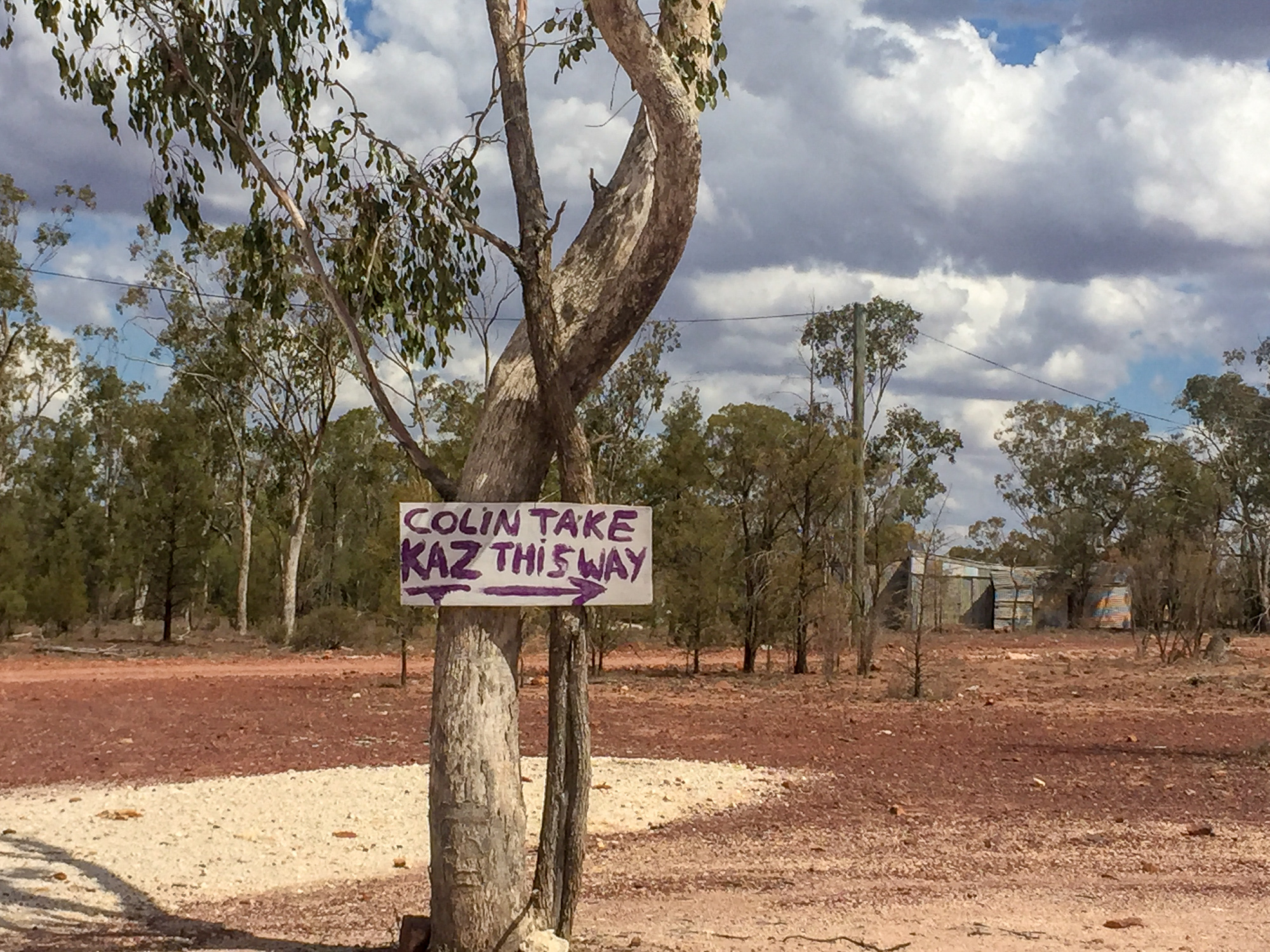
<< Photo credit: Jules – Colin must need signs to help get her home as this and the other signs tell Colin where to take her.. >>
All in all, a nice couple of nights and new and interesting experiences were had here in Lightning Ridge. Tomorrow we’re heading through Bourke, aka the “back of Bourke”, on our way to Broken Hill which is whar the next post will discuss.
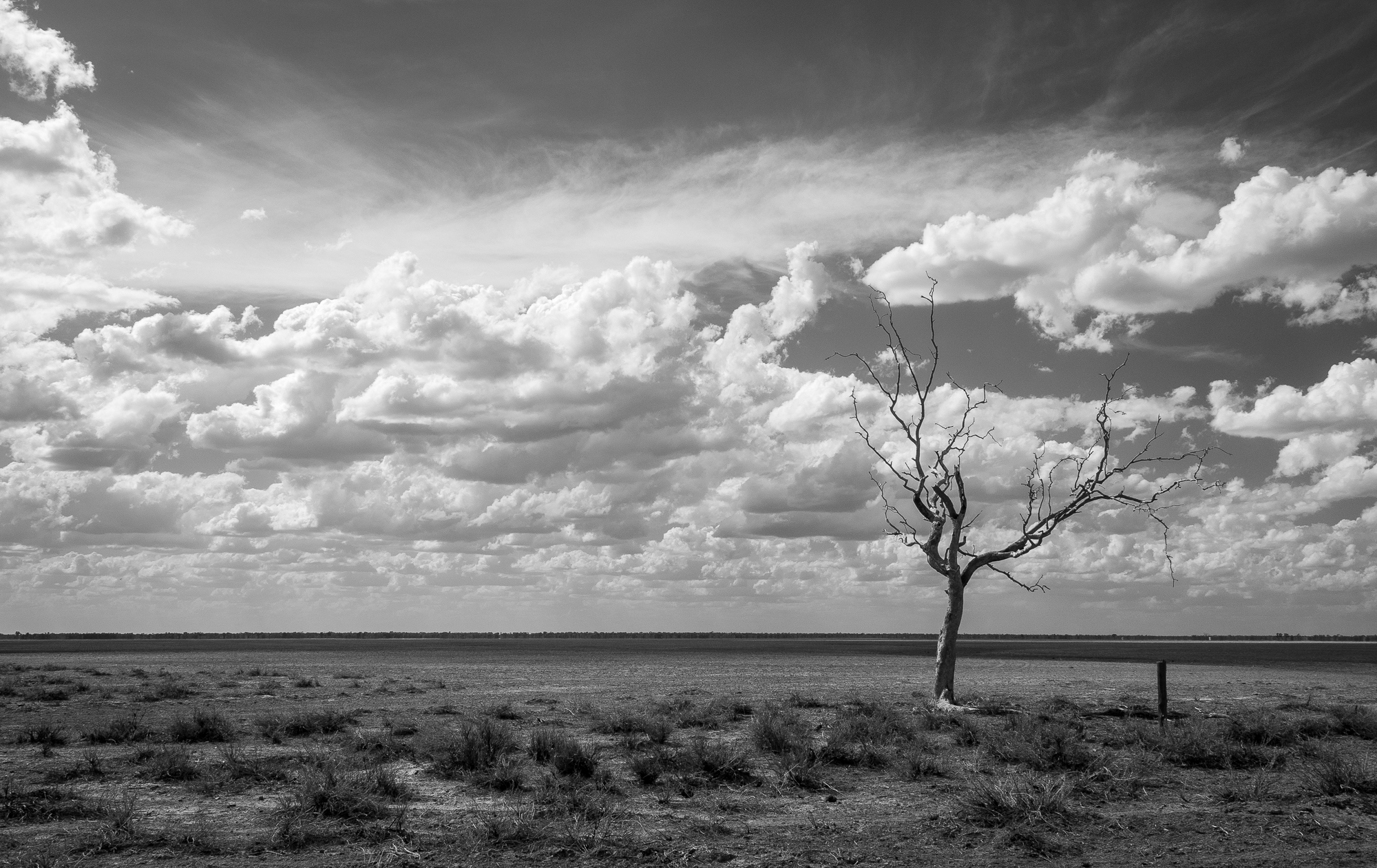
<< Photo credit: Tony – A dead tree on the edge of a very flat and dry field which looks like it could be a lake if it ever rained. >>
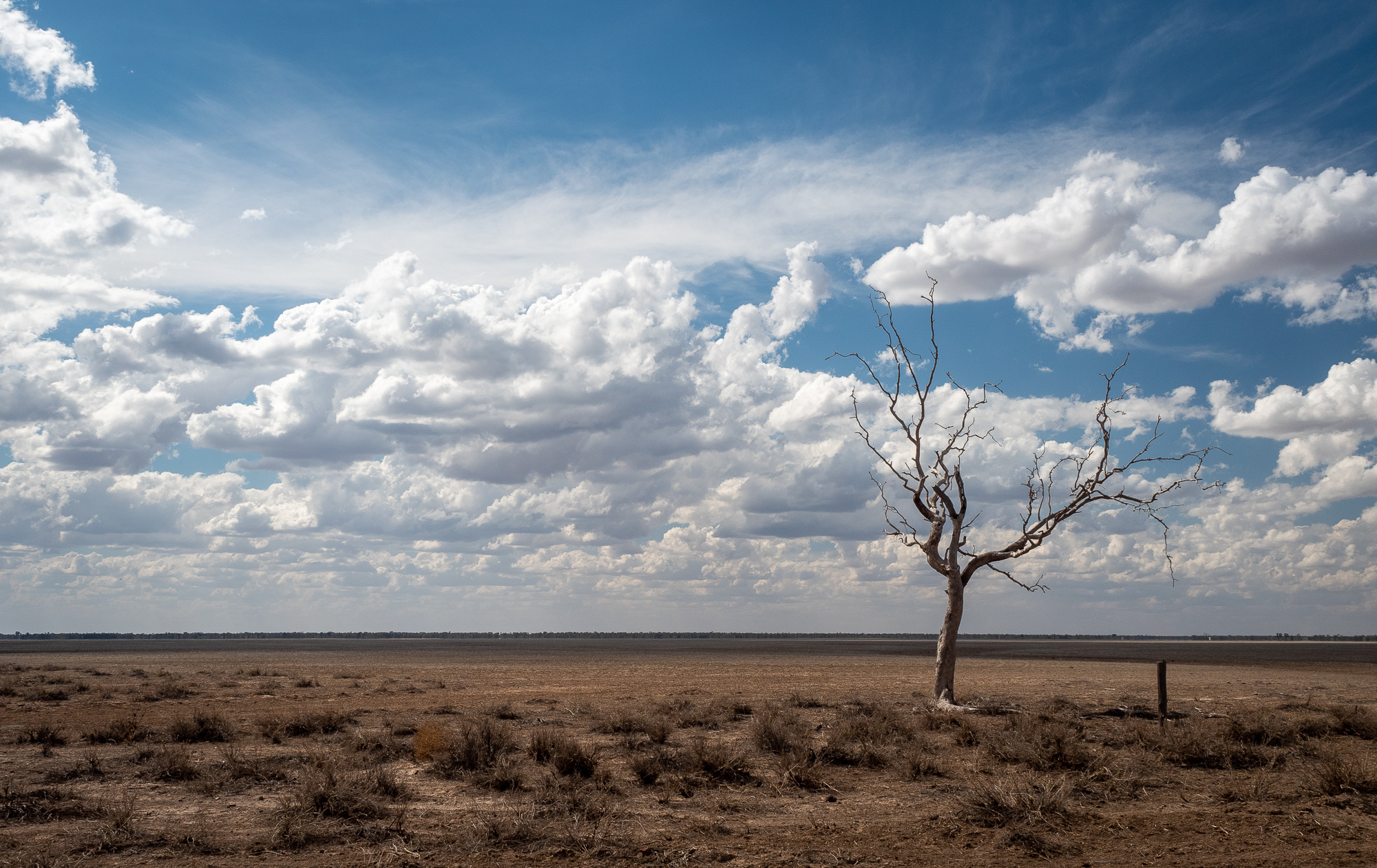
<< Photo credit: Tony – Same pic of the tree but I couldn’t work out if I liked the black’n’white or the colour version so I posted them both. >>
That’s my grandmas car good old Colin